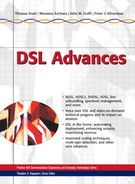17.1. ITU
Founded in 1865 as the International Telegraph Union, the ITU later changed it name to the International Telecommunications Union in 1934 and became an agency of the United Nations in 1947 with its headquarters in Geneva, Switzerland. Approximately 190 countries are members of the ITU. The ITU consists of:
The General Secretariat, which provides administrative and financial functions
ITU-D, the Development Sector, which coordinates and assists the development of new telecommunications infrastructure, primarily in developing countries
ITU-R, the Radio-Communications Sector, which ensures the fair, efficient, and economical use of radio-frequency spectrum for all uses
ITU-T, the Telecommunications Standardization Sector, which studies technical, operating, and policy questions. Previously know as the CCITT, the ITU-T issues Recommendations (nonbinding standards) for the purpose of international standardization of systems and services. In 1997, the ITU-T consisted of:
World Telecommunications Standardization Conference (WTSC) which defines general ITU-T policy and approves “questions” (i.e., projects)
Telecommunications Standardization Advisory Group (TSAG) which provides advice regarding work priorities and strategies
Telecommunications Standardization Bureau (TSB) which provides secretariat (administrative) and coordination functions
Study Group 2— Network operation: network management, numbering, routing, service quality
Study Group 5— Protection against electromagnetic environment effects: protection of equipment and humans from electromagnetic hazards
Study Group 6— Outside plant: cables and associated structures
Study Group 7— Data network and open system communications: data communications network aspects, frame relay
Study Group 10— Languages for telecommunications applications
Study Group 11— Switching and signaling: intelligent network
Study Group 12— End-to-end transmission performance of networks and terminals
Study Group 13— General network aspects: consideration new concepts, broadband ISDN (BISDN), global information infrastructure (GII)
Study Group 14— Modems and transmission techniques for data, telegraph, and telematic services: modems, ISDN terminal adaptors
Study Group 15— Transmission systems and equipment: subscriber access systems, DSLs, fiber optic transmission (DSL is addressed in Q4/15.)
Membership classes consist of:
Administrations (countries)
Recognized operating agencies (ROAs): network and service providers
Manufacturers, scientific, and industrial organizations (SIOs)
International and regional organizations
The ITU-T may be reached at ITU-T, Place des Nations, CH1211 Geneva 20 Switzerland, www.itu.int.
